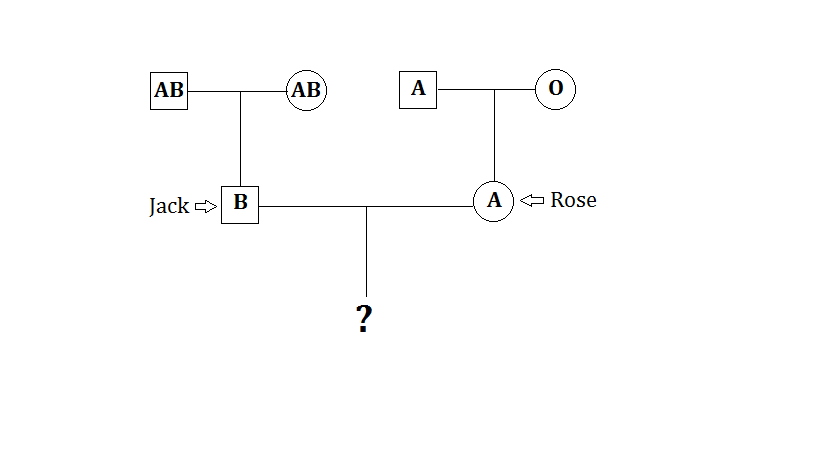What's your blood type? (Part 2)

Jack and Rose are getting married, and the diagram above shows the pedigree of their families, indicating the blood types for all family members.
In the ABO blood group system, each person carries a pair of genes determining the red blood cell phenotype, acquired from his or her parents (one gene from father and one from mother). The O-type individuals must have 2 O-genes, resulting in no antigens on the red blood cells. The A & B-genes, on the other hand, are dominant over the O-gene: with A & O-genes, the person will have type-A, and with B & O-genes, he or she will have type-B. However, the A & B genes are not dominant over each other; that is, if one possesses both A and B-genes, the blood will be type-AB. Finally, each parent has a 50:50 chance of giving his or her child one of their 2 genes.
Under normal circumstances (no mutations or genetic diseases), what is the chance that Jack's and Rose's child will have blood type-A?
This section requires Javascript.
You are seeing this because something didn't load right. We suggest you, (a) try
refreshing the page, (b) enabling javascript if it is disabled on your browser and,
finally, (c)
loading the
non-javascript version of this page
. We're sorry about the hassle.
From the diagram, genetically, Jack's type-B actually composes of 2 B-genes acquired from both of his parents (the only case; if A-gene is involved, Jack will have type-AB like his parents.). On the other hand, Rose's got A and O-genes because her mother can only give her O-gene, and in order for Rose to have type-A, the A-gene must come from her father.
Now back to Jack & Rose, since Jack's got BB genes, he can only contribute a B-gene while Rose has a 50:50 chance of giving her child A or O-gene. The permutations then follow as: AB, BO.
Therefore, their child has a 50% chance to have type-AB or type-B but 0% chance to have type-A as Jack can only provide the B-gene. (The type-O is also impossible as well.)